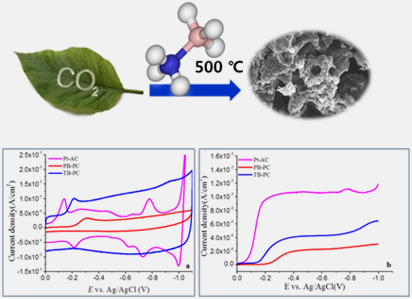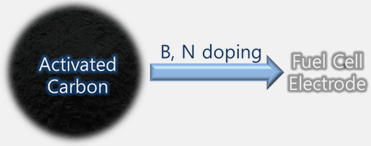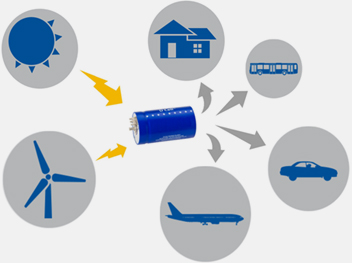|
|
|
| HOME > Research > Research Field |
| |
| Research Field |
| |
 |
| |
 CO₂conversion to energy materials CO₂conversion to energy materials |
| |
 Energy storage carbon materials derived from Carbon dioxide (CO2) Energy storage carbon materials derived from Carbon dioxide (CO2) |
|
 |
| |
|
Carbon dioxide (CO2) is one of the significant greenhouse gases that should be reduced. Therefore, many efforts have been made to capture and store CO2 to reduce its emission. However, CO2 is economical, non-toxic, and recyclable carbon source. The conversion of CO2 into useful carbon materials includes carbon nanotube (CNT), porous carbon, and graphene. However, conversion of CO2 requires severe reaction conditions of high pressure and temperature. To solve these problems, the central theme of this project is to convert CO2 into useful porous carbon materials in a benign condition using metal borohydride such as NaBH4. The resultant porous carbon derived from CO2 was used as electro-catalysts for oxygen reduction reaction in fuel cell and electrode materials for supercapacitors in this project.
|
|
|
| |
 Fuel cell catalyst using B-/N- doped activated carbon (AC) Fuel cell catalyst using B-/N- doped activated carbon (AC) |
|
 |
| |
|
Fuel cell has been paid great attention as an efficient energy conversion device which can directly convert chemical energy into electrical energy. Pt-based materials are widely used as fuel cell catalyst. However, commercialization of fuel cell is disturbed by scarcity, high cost, and low durability of Pt-based materials. Therefore, efforts to find alternatives for fuel cell catalyst have been performed. Among many alternatives, heteroatom (B, N, etc.)-doped carbon materials are mainly focused as research field. In our laboratory, a commercial activated carbon (AC) is used as a carbon source to produce fuel cell catalysts. AC is cheap and easily obtainable material, and B-/N-doped AC shows a remarkable oxygen reduction reaction (ORR) activity and catalytic durability. The objective of this research is production of B-/N-doped AC material which has comparable ORR activity to commercial Pt catalyst.
|
|
|
| |
 Secondary batteries and Supercapacitors Secondary batteries and Supercapacitors |
|
 |
| |
|
To date, the electric generation demand have increased on the world. Today, most of electrical energy is obtained from fossil fuels. However, these sources generated large amount of CO2 emission, a greenhouse gas. The environmental concerns have invoked the interest in generating electricity from renewable energy. But, these energy sources, solar and wind energy are not reliable and constant. Therefore, the electrical energy storage will play a significant role in enhancing the reliability of the renewable power system. Supercapacitors have been studied by many research groups as a potential electricity storage device with an electrical double layer of a high surface area electrode. Recent efforts have been made to convert CO2 to B-doped porous carbon that is utilized for supercapacitor after KOH treatments and to upgrade a non-conducting polymer to nitrogen-doped porous carbon for supercap.
|
| |
 |
|
|
|
|
| |
|